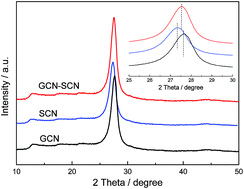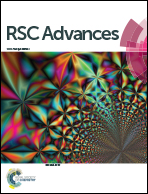Construction of g-C3N4/S-g-C3N4 metal-free isotype heterojunctions with an enhanced charge driving force and their photocatalytic performance under anoxic conditions†
Abstract
In heterojunction catalysts, the potential difference is the main driving force for efficient charge separation and transfer. The slight difference in the electronic band structure of the isotype heterojunction catalysts causes a poor driving force, leading to a dissatisfactory charge separation efficiency. In this work, g-C3N4/S-g-C3N4 metal-free isotype heterojunction catalysts (GCN–SCN) with an enhanced charge driving force were prepared by a two step calcination method. Anoxic photocatalytic degradation of RhB under visible light was used to evaluate the performance of the as-prepared g-C3N4 catalysts. The results indicate that this two step calcination method can markedly improve the charge driving force of the as-prepared isotype heterojunctions, leading to a more efficient charge-carrier migration. GCN–SCN displays the highest reaction rate constant of 0.0228 min−1, which is 3.5 and 2.9 times higher than that of GCN/SCN(1) and GCN/SCN(2) prepared by a one step calcination method. A linear relationship is observed between the VB driving force and RhB degradation rate. This paper provides a new perspective to prepare isotype heterojunctions with an improved charge driving force and photocatalytic performance.


 Please wait while we load your content...
Please wait while we load your content...